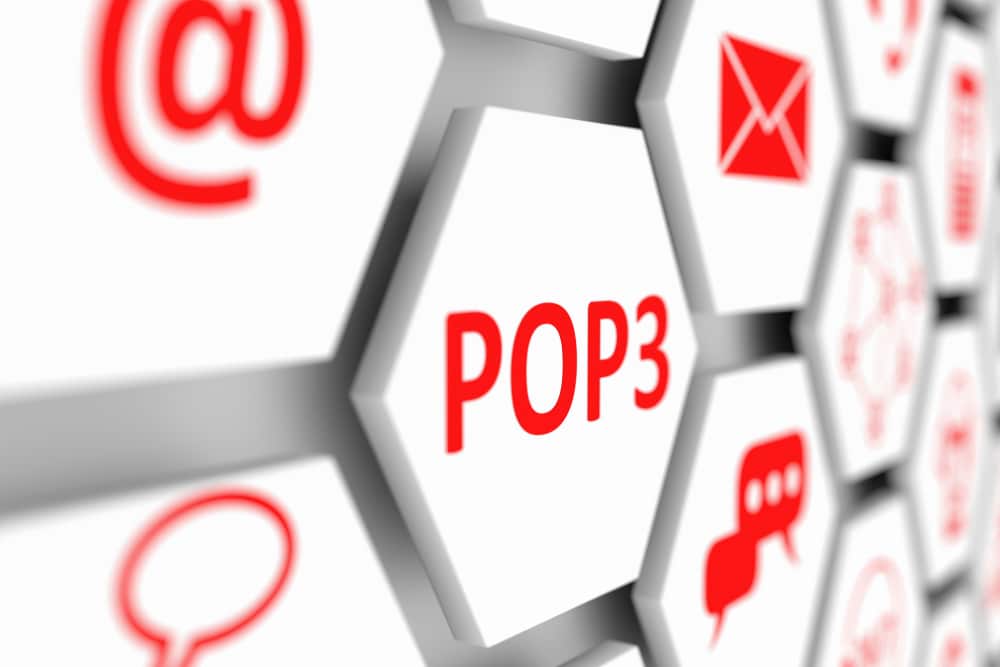
Before you can decide which to use, it’s important to understand the differences between the three major ways email gets delivered to your inbox as well as the pros and cons of each service.
POP3
POP3 (sometimes just “POP” – Post Office Protocol, version 3) was the first major email protocol that garnered universal adoption when the Internet became pervasive in the 1990s. A POP-based email service is simple: your email client (such as Outlook, MacMail, or Thunderbird) connects to the mail server and then downloads your emails directly to the computer. The downloaded email is then deleted from the server (though, most clients have a setting to prevent this).
PROS:
- Cheap – no licenses required.
- Universal adoption – supported by virtually all devices.
- Simple to implement and configure.
CONS:
- When a message is downloaded, it is removed from the server (if you save messages to the server, you may end up downloading the same email multiple times).
- When a message is sent, there is no server copy.
- If you access your mail on different devices, you’ll see different emails depending on what was downloaded to which device.
- No way to organize your inbox. The inbox is your only folder.
- Hasn’t had a major update since 1988.
- Largely obsolete.
SHOULD I USE POP3?
No. It’s 2019. You should be on IMAP.
IMAP
IMAP (Internet Message Access Protocol) is the second major iteration of how people access their email – and also the most popular today. It has all the functions of POP3, but also has one major benefit that matters to most users: email syncing between multiple devices. This allows you to have the same email experience between devices because all your email (incoming and outgoing) are stored directly on the server, rather than downloaded directly to your computer. For this reason, IMAP supplanted POP3 and has largely made it obsolete. If you use Gmail, you’re using IMAP.
PROS:
- Cheap – no licenses required.
- Universal adoption – supported by virtually all devices.
- Email syncing. All messages, including sent messages, are saved on the server.
- Folder support to organize your inbox.
- Compatibility: if your server supports IMAP, it most likely supports POP3.
CONS:
- Folders on the server can get duplicated if not set up properly.
- Easy to run out of inbox space if you never delete emails or have small storage.
- Requires more powerful servers.
SHOULD I USE IMAP?
Simply: Yes.
Microsoft Exchange
Microsoft Exchange / Microsoft Office 365 is a proprietary platform developed by Microsoft. It requires the purchase of user or server licenses. Traditionally, it has been marketed to the Enterprise-level consumer and offers all the functionality of IMAP but also has other features to help businesses and organizations better collaborate among employees and staff.
Features such as shared address books & calendars, shared file storage, and native integration with other Microsoft products like SharePoint and Office. Microsoft Office 365 – a relatively new offering – competes directly with Google Apps for Business – and is geared to make Enterprise-level functionality found in Exchange more cost-effective for small to medium-sized businesses.
PROS:
- Email syncing – instead of downloading an email, a copy is created on your device while the original stays on the server.
- Folder support to organize emails.
- Sent messages are saved on the server.
- Native integration with most Microsoft products.
- Offers many collaborative tools to enable team members to share resources like calendars and documents.
- Licenses can be purchased per-user or per-server to help scale cost.
CONS:
- Can be expensive – user and server licenses can end up costing thousands annually.
- Upgrades aren’t free on Exchange: Microsoft releases a new version every 1 to 3 years and requires you to purchase new licenses to use it. You can avoid this by purchasing Microsoft Office 365 accounts instead.
- Setup and maintenance requires specialized knowledge.
WHO SHOULD USE MICROSOFT EXCHANGE
- Those working in a team environment and require collaborative tools such as shared contacts and calendars, shared file storage, use many other Microsoft products.
- Organizations who want full control of the email server.
- Organizations with technical expertise available to manage and maintain it (or a reliable technical partner).
SHOULD I USE MICROSOFT OFFICE 365?
- If you want the benefits and functionality of Exchange server, but a more simple, streamlined experience.
- If you want to avoid the licensing costs of a full Exchange server and only want to pay on a per-user basis.







 by
by